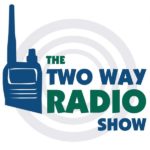If you spend a lot of time shopping around for two way radios, at some point you may have come across the term "intrinsically safe". If you're somewhat new to the world of walkie-talkies, you probably have a few questions. What is an intrinsically safe radio? What does it do? What makes an "intrinsically safe" radio different from any other radio? Why would I want one? Why would I need one? Why would I even care?
The word intrinsic refers to the essential or real nature or value of something. In electronics it refers to the very nature of an electronic device as being electrical; an item that operates using electricity. Any electronic device, by its very nature, carries and electrical current or charge, therefore the chance of an electrical spark or heat eminating from the device is inherently present or a possibility at all times.
Intrinsically Safe means the device is safe to use in hazardous environments where the presence of a potential spark, heat or flame could potentially create a safety hazard. In the case of two way radios, this is especially important. Since radios are electrical, they do have the potential to generate sparks and heat, and there are many situations in which a radio may need to be used in potentially hazardous or explosive environments.
Such environments include oil rigs and refineries, gas mains, coal mines, engine rooms of seafaring vessels, chemical plants, factories, emergency scenes involving First Responders, and other environments where there are potentially explosive or hazardous materials.
Hazardous environments fall into different divisions and classifications. The details are outside the scope of this discussion, but essentially they fall into three basic classifications:
- Class 1: flammable vapors and gases
- Class 2: flammable dust
- Class 3: flammable fibers
In such environments, two way radio communication can be very important and even critical to operations, yet standard two way radios should not be used because they can make a potentially hazardous situation even more dangerous.
These situations require the use of Intrinsically Safe radios.
In order to be designated Intrinsically Safe, radios must be designed and housed in such a way as to prevent or eliminate the possibility of generating even the tiniest little spark. They must also limit the amount of heat produced by the radio. The batteries used in the radios must also be specially designed to prevent sparks and eliminate short circuiting. Even the radio housing itself must be designed and constructed of materials to prevent or eliminate friction, which can create static electricity and generate sparks.
In addition to the radios, any accessories used, such as microphones and headsets, need to be intrinsically safe.
Intrinsically safe two way radios are manufactured according to strict codes and regulations set by the National Fire Protection Association. The manufacturing facilities and processes are supervised by Factory Mutual, an insurance and loss prevention company approved by the US government to oversee enforcement of the NFPA codes.
Due to these more stringent manufacturing requirements, Intrinsically Safe radios are considerably more expensive than their standard counterparts. However, the safety considerations built into these radios are worth far more than that. After all, you can't put a price on safety.
Radios manufactured as Intrinsically Safe carry the FM (Factory Mutual) Approved certification mark. Icom, Motorola, and Vertex are major brands with one or more models of intrinsically safe two way radios.
This chart lists popular makes and models of intrinsically safe radios currently available from Buy Two Way Radios.
Questions? Leave us a comment below. You can also give us a call, e-mail us or enter our live chat from 8 AM to 6 PM Monday through Friday!
This entry was posted in General, Two Way Radios, Articles and tagged twoway, two, way, radio, radios, Business, UHF, VHF, 2way, communications, handheld, portable, mobile, walkie, talkies, talkie, codes, battery, consumer, Icom, Association, BP-227FM, F60, Factory, Fire, FM, Global, hazards, hazmat, IC-F60, intrinsic, intrinsically, NFPA, Protection, standards, static, safe, hazard, spark, heat, electricity, explosive, gases, vapors, dust, flammable, liquids, fibers, National, classifications, Approvals, approved, Mutual, IC, Vertex, VX-427, pack on August 11, 2011 by Rick.







